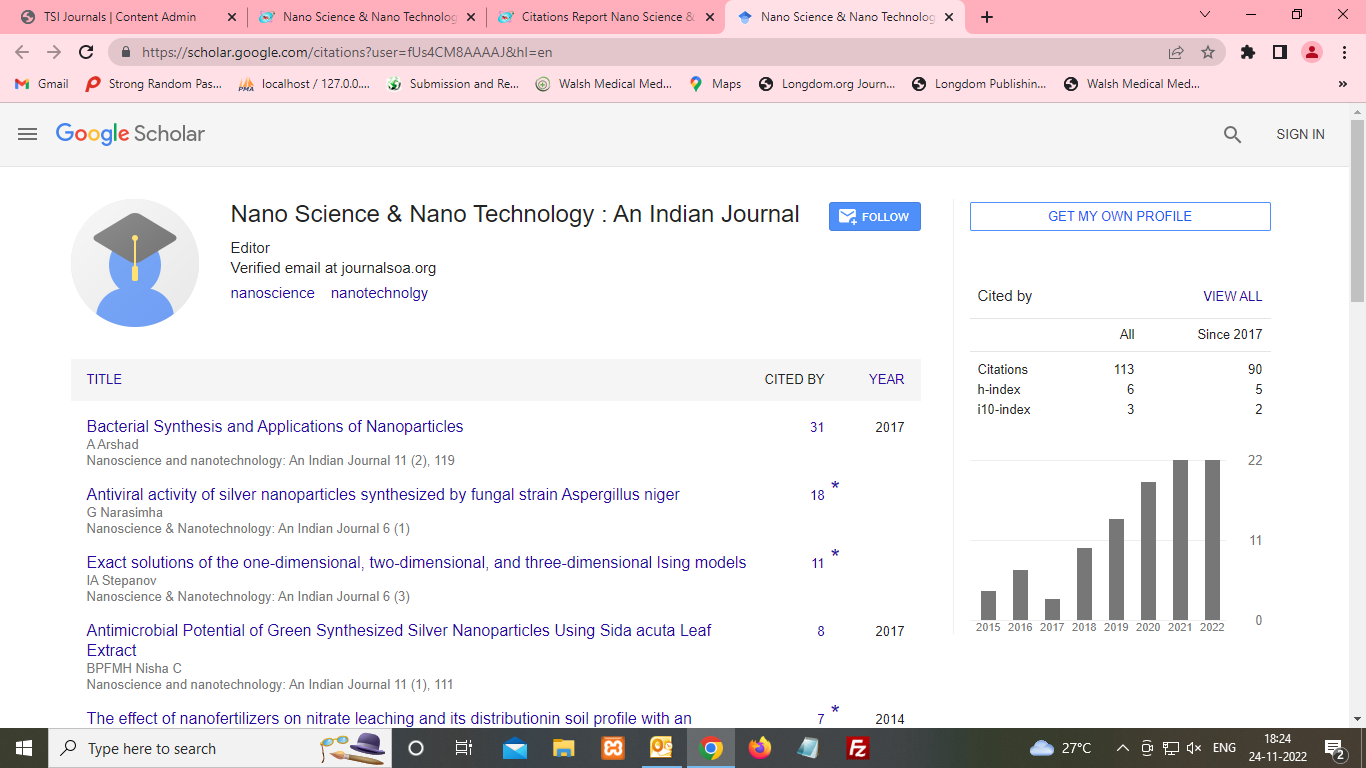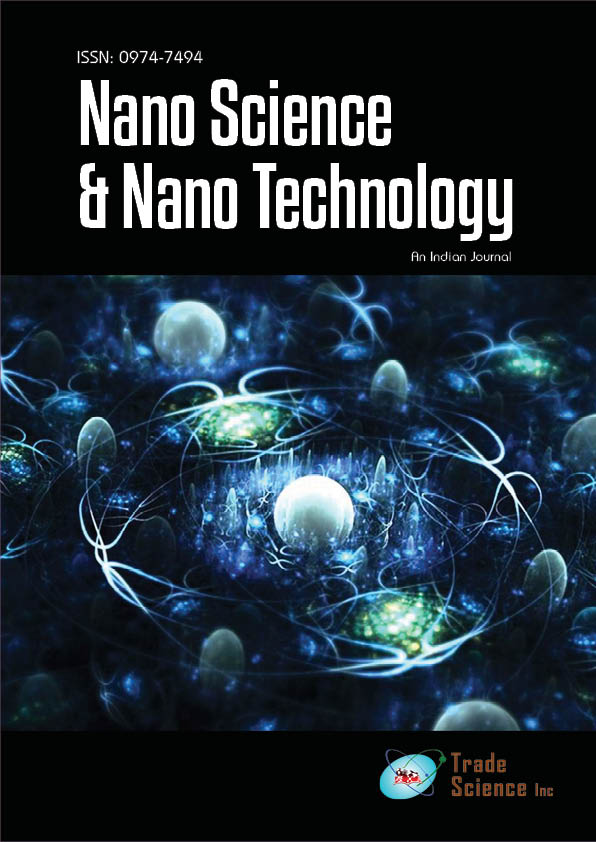Current opinion
, Volume: 16( 3) DOI: 10.37532/ 0974-7419.2022.16(3).153Supported TiO2 Catalysts for Photocatalytic Degradation of Aqueous Rhoda mine 6G Organic Contaminants in Aqueous Samples: A Model for Removal
- *Correspondence:
- Sara BrownEditorial Office, Nanoscience & Nanotechnology: An Indian Journal, UK, E-mail: info@tsijournals.com
Citation:Brown S. Supported TiO2 Catalysts for Photocatalytic Degradation of Aqueous Rhodamine 6G Organic Contaminants in Aqueous Samples: A Model for Removal. Nano Tech Nano Sci Ind J. 2022; 16(3):153
Abstract
For the oxidation of numerous organic contaminants, photocatalysis has emerged as a promising new method that is environmentally friendly..
The heterogeneous photocatalytic degradation of Rhodamin 6G was investigated utilising TiO2-derived catalysts, included in water as suspension as well as supported in raschig rings, as a model for the removal of complex organic pollutants from industrial water effluents. We investigated the photo-degradation mechanism under UV and visible light.
When a substance comes into contact with photons with a high enough energy level, free radical processes begin to operate, activating the chemical reaction known as photocatalysis.
Commentary
The elimination of harmful organic pollutants existing in the environment, particularly in water sources, as a result of human productive activities has become a major research area focused on developing sustainable water treatment systems and procedures.
With over 10,000 varieties of commercial dyes and 70,000 tons of trash created yearly, the leather, paper, plastic, and textile sectors employ dyes to color their goods while utilizing huge amounts of water. This discharge of wastewater into natural streams causes substantial issues, such as increased toxicity and oxygen demand in the effluents, as well as a reduction in the quantity of light that can flow through the water, negatively impacting aquatic life's photosynthesis. Because of the high molar absorptivity coefficients of dyes (1 ppm), the presence of modest concentrations of dyes (1 ppm) is extremely apparent and undesired.
TiO2 production
The Sol-gel technique was used for TiO2 production. To dissolve 16.6 ml of titanium isopropoxide, a combination of 100 mL ultrapure water and 27 ml isopropanol was used, with steady stirring for 20 min. Following that, 3.1 mL HNO3 0.032 M (acid synthesis) was added and the solution was held at 80°C for 20 hours under continual stirring. Finally, the gel was heated for 4 hours at 560°C in a muffle furnace before being allowed to cool at ambient temperature to recover the solid TiO2.
Raschig Rings with TiO2 support
50 Raschig rings were put into a crystallizer containing 0.25 gm of Polyethylene Graft Maleic Anhydride (PEGMA) totally dissolved in 25 mL of hexane, and the temperature was elevated to 70°C to accomplish the entire evaporation of the solvent. The dried rings were suspended in an aqueous TiO2 solution (10 g/L for the synthesized TiO2 catalysts and 1 g/L for commercial TiO2 samples) for 30 minutes. The solvent was then evaporated by heating the suspension at 150°C for 2 hour in a muffle furnace, followed by the elimination of the remaining organic materials by heating at 500°C for 2 hour
The inclusion of additives alters the kinetics and efficiency of TiO2-catalyzed Rh6G photodegradation, especially when white light is utilized, indicating a complicated phenomenon. However, the stability of the supported photocatalytic systems is acceptable in the presence of the examined additives. Accordingly, the amount of the chemical oxygen demand shows that, despite the various complicated photophysical processes at work, the intermediate products of the photocatalytic systems under consideration appear to be comparable. At nanomolar concentrations, hydrogen peroxide can function as a scavenger of electrons from TiO2 conduction band, promoting charge separation and the generation of hydroxyl radicals, which might contribute to the increased degradation of Rh6G. However, our system shows a reduction in photodegradation efficiency, indicating that the electron and/or hydroxyl radical scavenging characteristics of hydrogen peroxide may be relevant at the H2O2 concentrations investigated.
When UV light (365 nm) is used to irradiate an Rh6G solution, a 22% degradation rate is observed, which is increased further in the presence of supported TiO2 catalysts, with Degussa P25 degradation efficiencies exceeding 70% and Anatase and AS-TiO2 degradation efficiencies exceeding fourfold the degradation.
Heterogeneous photocatalysis has proven to be an effective method for degrading a variety of contaminants. This method employs radiant energy, such as visible and ultraviolet light emitted by artificial light sources or directly from the sun, which, when interacting with a catalyst (semiconductor), causes charge separation via charge transfer processes, resulting in the formation of reactive oxygen species (hydroxyl radicals, superoxide anion, hydrogen peroxide, and so on), which are required for the oxidation and subsequent mineralization of organic contaminants.
The inclusion of additives alters the kinetics and efficiency of TiO2-catalyzed Rh6G photodegradation, especially when white light is utilized, indicating a complicated phenomenon. However, the stability of the supported photocatalytic systems is acceptable in the presence of the examined additives. Accordingly, the amount of the chemical oxygen demand shows that, despite the various complicated photophysical processes at work, the intermediate products of the photocatalytic systems under consideration appear to be comparable.

